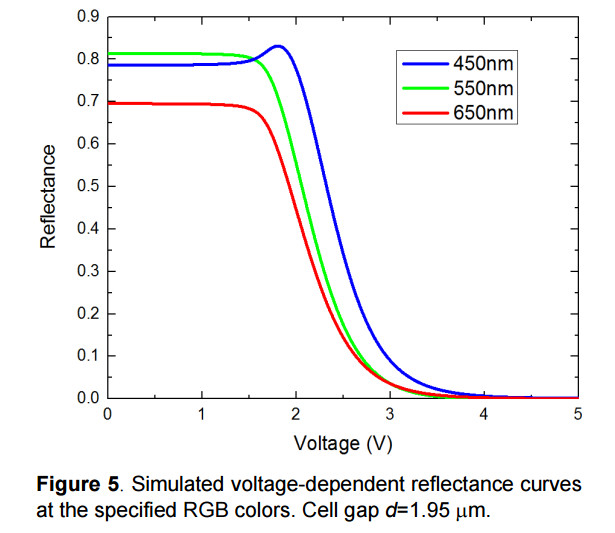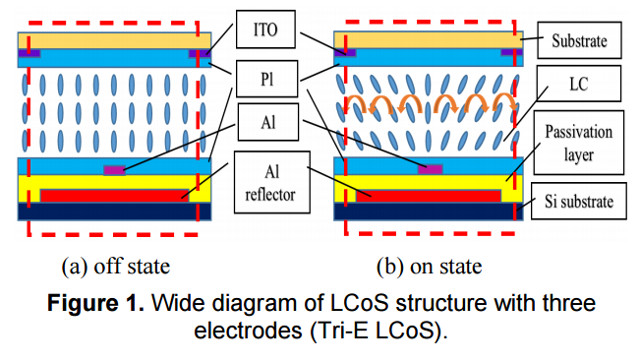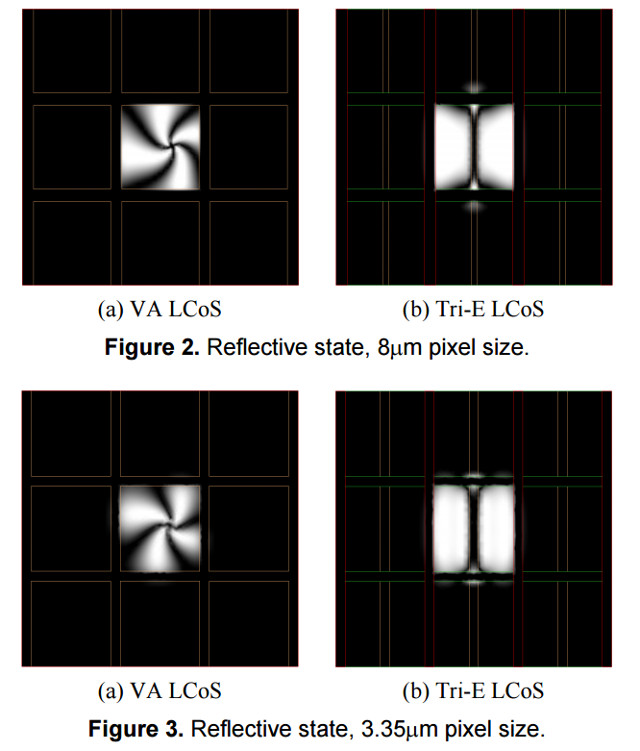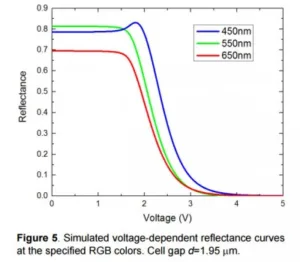Single panel projection, HMD or HUD solutions require a very fast response time from the imager if they operate in a color sequential mode. This mode is preferred as it can increase resolution by 3X, but can introduce other artifacts, especially color break-up or rainbows. Field fringing effects which reduce transmittance, can also be problematic in LCOS displays especially as the pixel pitch gets smaller. Two papers from session 16 at SID are summarized below. One deals with a new LC material to improved response time and the other describes a new electrode structure to reduce field fringing.
A paper presented by University of Central Florida described a new Mixed-mode Twisted Nematic (MTN) mode liquid crystal that can achieve sub-millisecond response making it suitable for color sequential LCOS applications.
There are only a few way to achieve very fast (i.e. sub millisecond) response in liquid crystals. One is to use an inherently fast material like ferroelectric or polymer stabilized blue phase LCDs, but high operating voltages and low transmittance have not yet made these commercially viable.
The approach that is most use today is a vertically aligned nematic (VAN) mode liquid crystal with a very thin cell gap. This can get fast response and high contrast, but field fringing effects degrade transmittance, especially at high pixel pitches. Field fringing creates unwanted black lines in the pixel due to leakage of the electric field from an adjacent pixel.
MTN liquid crystals show promise as they offer high transmittance, low operation voltage and a weak fringing field effect. Its response time is proportional to the cell gap (squared) and visco-elastic coefficient of the liquid crystal. To speed up the response time of MTN mode, two approaches are considered: 1) Using a thin cell gap which requires a large birefringence LC to achieve high reflectance; 2) Employing an ultra-low viscosity LC mixture.
LCOS projection application run in a thermally hot environment, which means the liquid crystal must have a high clearing temperature. To achieve this means the liquid crystal must employ three-ring and four-ring compounds – but that increases the viscosity and lengthens the response time.

The University group has apparently solved this conundrum by developing a new MTN material with a high clearing temperature (102C) and low viscosity. Employing the measured material parameters in a MTN LCoS, the average gray-to-gray (GTG) rise time is 0.5 ms and decay time is 0.2 ms at T = 55°C. At T = 35°C, the corresponding GTG rise time is 1.0 ms and decay time is 0.4 ms. This makes the materials promising for head-up vehicle displays and near-to-eye wearable projection displays.
A second paper by South East University in Nanjing, China describes a new three electrode structure for an LCOS panel that can dramatically reduce field fringing. The new structure, called Tri-E LCOS, is shown schematically below in an on and off state.

The design does not require a change in the drive electronics. The two top electrodes are shared by adjacent pixels while the bottom center electrode is unique to each pixel.
To evaluate the design, the team simulated two LCOS panels using VA mode liquid crystal with an 8 micron pixel pitch and a 3.35 micron pixel pitch. They also varied the cell gap finding 2 microns optimal. The results of the simulation are shown below. The dark areas represent loss of light so minimizing these is the goal.

The 8 micron pitch device performs very well compared to conventional VA mode LCOS. At a 3.35 micron pitch, some minor leakage into adjacent pixels is evident. -CC

